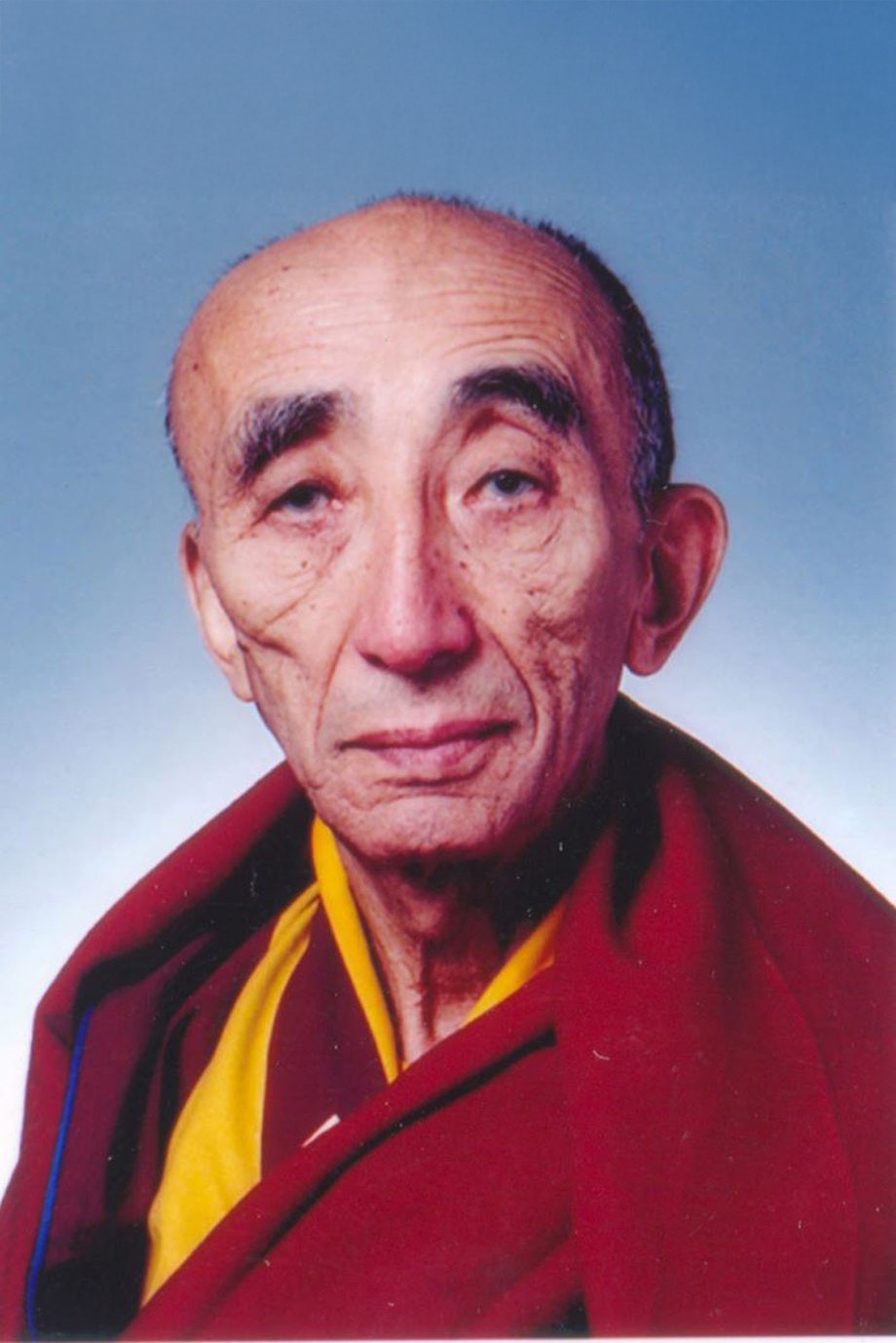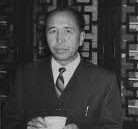


The Life and Legacy of the 19th Kushok Bakula Rinpoche
The 19th Kushok Bakula Rinpoche was a revered Buddhist scholar, statesman, and visionary leader who played a pivotal role in shaping modern Ladakh. His legacy extends beyond his religious leadership to his contributions to education, politics, and international diplomacy.
Early Life and Education
Born in 1917 in the royal family of Matho village in Ladakh, Kushok Bakula Rinpoche was recognized as the 19th incarnation of Arhat Bakula, a direct disciple of the Buddha. He pursued higher monastic education in Tibet, earning the prestigious Geshe Lharampa degree from Drepung Monastery.
Leadership and Vision
Kushok Bakula Rinpoche's leadership transcended religious boundaries. He played a crucial role in:
Indian Independence Movement
Buddhist Diplomacy
Pethub Monastery: A Symbol of Indo-Mongolian Relations
The Pethub Stangey Choskorling Monastery in Ulaanbaatar, Mongolia, stands as a testament to the enduring friendship between India and Mongolia. Inaugurated on August 26, 1999, the monastery was established under the guidance of the 19th Kushok Bakula Rinpoche.
Revival of Buddhism in Mongolia
Rinpoche's efforts to revive Buddhism in Mongolia were multifaceted:
Political Career
Kushok Bakula Rinpoche's political career spanned several decades, during which he:
Legacy and Recognition
Kushok Bakula Rinpoche's contributions earned him numerous accolades, including:
Lasting Impact
The 19th Kushok Bakula Rinpoche's vision for Ladakh's future was realized when the region was granted Union Territory status in 2019. His legacy continues to inspire people worldwide, and his contributions to education, politics, and international diplomacy remain a testament to his remarkable life and work.
Conclusion
The 19th Kushok Bakula Rinpoche was a true visionary and statesman who dedicated his life to the service of his people and country. His legacy serves as a reminder of the power of selfless leadership and the importance of promoting education, peace, and understanding.


Honoring the Legacy and Contributions of Er. Sonam Norbu to Ladakh and the Nation
Introduction
In the annals of post-independence Ladakh, a British-trained engineer Sonam Norbu finds a special place. His contributions played a pivotal role in securing the cold desert from the grasp of Pakistani tribal raiders in 1948-49.
The Construction of the Leh Airstrip
In 1948, Norbu was tasked with constructing a makeshift airstrip in Leh, which would allow the Indian armed forces to fly reinforcements into the region. With little technological or engineering expertise and carrying a mere Rs 13,000 from the Maharaja Hari Singh administration, Norbu went about completing the task. The Spithuk area of Leh, where the airstrip was constructed, was dotted with many large boulders and stones. Norbu's team manually moved these boulders and cleared the 2,300-yard airstrip fit for landing in just three weeks. The airstrip was ready for service on April 6, 1948.
The Dakota Aircraft Landings
On May 24, 1948, the famous Dakota DC-3 transport aircraft made its way to Ladakh, carrying Air Commodore Mehar Singh, co-piloted by Flight Lieutenant SD Singh, with General Thimayya on board. This was a landmark moment in the modern history of Ladakh. The Dakota aircraft played a crucial role in dropping reinforcements and supplies, pushing the tribal raiders away.
Role in the 1948 War
Norbu's contributions during the 1948 war were instrumental in saving Ladakh from Pakistani forces. The Indian armed forces, with the help of the airstrip constructed by Norbu, were able to drive back the tribal raiders and secure the region.
Early Life and Education
Born into the peasant Nyachu family in Leh on May 27, 1909, Sonam Norbu graduated from the University of Punjab and obtained his engineering degree from the University of Sheffield in the United Kingdom during the mid-1930s.
Career and Contributions
Following Independence, Sonam Norbu served as Development Commissioner, joined the Jammu and Kashmir Public Works Department, and subsequently became a Chief Engineer with the Border Roads Organisation. He was instrumental in completing both the survey and construction of the Srinagar – Leh road through the Zojila Pass in the 1950s. For his distinguished service to the nation, Sonam Norbu was awarded the Padma Shri in 1961.
Ambassador to Mongolia and Later Life
In 1971, Sonam Norbu was chosen as the first "residential" ambassador to the Mongolian People’s Republic. After his tenure in Mongolia, he entered active politics, joining the Sheikh Abdullah government’s cabinet as Minister of Works and Power. He oversaw the construction of many massive power projects across Jammu and Kashmir and inaugurated civilian flights from the Leh airport in 1977.
Legacy
Sonam Norbu passed away in 1980, leaving behind a legacy of selfless service to the nation. The district hospital in Leh, Sonam Norbu Memorial Hospital, remains a testament to his contributions. His life serves as an inspiration to future generations of Ladakhis, showcasing dedication, sincerity, and patriotism.
-07052506314422.png)
-07052506314422.png)
The Legacy and Contributions of Pandit Sridhar Kaul Dullu to Ladakh
Early Life and Career
Pandit Shridhar Kaul Dullu, affectionately known as Masterji, was a true pioneer in spreading education and knowledge in Ladakh. Born in 1892, he was trained to teach and later became a key figure in the region's educational and political renewal.
Appointment as Education Officer in Ladakh
In 1939, Maharaja Hari Singh transferred Masterji to Ladakh as an Education Officer, with clear directions to introduce basic education and pull the region out of illiteracy. Masterji took up this challenge with dedication and devotion, working tirelessly to spread education and knowledge among the people of Ladakh.
Role in Ladakh's Education
Masterji's love for Ladakh and its people led him to create educational awareness among them. He established schools and encouraged students to pursue higher education. He also founded the Ladakh Buddhist Education Society, dedicated to improving educational standards in Ladakh. Many Ladakhi students would stay with him at his residence in Rainawari, seeking his guidance and help with admissions.
Contributions During the 1948 Ladakh Campaign
In May 1948, during the Ladakh campaign, Masterji prepared a report on the defense of Ladakh and presented it to Pt Jawaharlal Nehru, the then Prime Minister of India. He was appointed as the organizer of National Guards for the defense of Ladakh, where he toured extensively, impressing upon people to enroll themselves and undergo arms training. His efforts raised about 500 volunteers.
Personal Connection with Ladakh
Masterji's connection with Ladakh went beyond his professional contributions. He adopted a Ladakhi girl named Dolma (Abi Dolma from Phey village, presently settled in Switzerland) as his daughter and educated her. He also gave his sons Buddhist names, Budhadev and Siddhartha, reflecting his deep respect for the region's culture and traditions.
Formation of Ladakh Buddhist Association
Masterji played a pivotal role in the formation of the Young Men Buddhist Association, later known as the Ladakh Buddhist Association, which remains the largest association of Buddhists in Ladakh. This organization has been instrumental in promoting the welfare and interests of the Buddhist community in the region.
Valuable Contributions as Advisor and Draftsman to Kushok Bakula Rinpoche
Masterji provided valuable advice for the welfare of the people of Ladakh, leveraging his expertise to support the region's development. As a skilled draftsman, he worked closely with prominent leaders, including Kushok Bakula Rinpoche, to draft important documents and proposals that advanced the interests of Ladakh.
Legacy and Impact
Masterji's legacy is a testament to his dedication to education and his love for the people of Ladakh. A community hall in Leh stands in his memory, and his book on Ladakh remains a much-sought-after item by foreigners who visit the region. Late Kushok Bakula praised Masterji's contributions, saying that Ladakhis would remain indebted to him for his remarkable work.
Artistic and Cultural Contributions
Masterji's artistic talents knew no bounds, with a repertoire that included creating portraits on leaves, stick painting, sculpture art, stone art, abstract art, and contemporary art. Among his most remarkable achievements was the world's tiniest painting of the revered Kaaba.
A paragon of honesty, integrity and dedication
Early Life and Education
Sh Thupstan Chhewang was born on September 1, 1947, in Shey, Ladakh. He completed his primary education in his native village and later moved to Kashmir with his uncle, Kushok Bakula Rinpochey, for further studies. He attended Model Academy School in Jammu and Tyndale Biscoe School in Srinagar, and later completed his matriculation from Mahabodhi Intermediate College in Sarnath, Varanasi. He graduated from Ramjas College, University of Delhi, and holds a law degree (LL.B.) from the Law Faculty, University of Delhi.
Family Background
Thupstan Chhewang comes from a distinguished family with a rich legacy. His mother, Princess Norzin Wangmo, is the great-great-great-granddaughter of Tsepel Tundup Namgyal, the last independent ruler of Ladakh. His mother was the sister of the 19th Kushok Bakula, and his maternal grandmother, Princess Yeshes Wangmo, was the daughter of the King of Zangla. He is married to Princess Sarla Chewang, the eldest daughter of King Chhosgyal Kunzang Namgyal, and has a son and a daughter.
Political Career
Thupstan Chhewang began his career as a political activist in 1972, organizing protests and agitations for the rights of Ladakhis. He was imprisoned for twenty days for his involvement in a protest against Syed Mir Qasim's visit to Ladakh. He spearheaded the movements for inclusion of Ladakhis as Scheduled Tribes, autonomy for the region, and demanding the status of Union Territory for Ladakh.
Notable Positions Held
• President, Ladakh Buddhist Association (1988-1995 and 2021-2023)
• First Chief Executive Councilor, Ladakh Autonomous Hill Development Council, Leh (1995)
• Member of Parliament, 14th Lok Sabha (2004) and 16th Lok Sabha (2014)
• Programme Executive, All India Radio (1978-1987)
• Director, Ladakh Ecological Development Group (N.G.O.)
• Presently, Chairman of Leh Apex Body, which is spearheading an agitation for securing Ladakh's safeguards and democracy
Contributions to Ladakh
• Advocacy and Rights: Advocating for the tribal rights of Ladakh in the 1980s and finally getting Scheduled Tribe Status for Ladakh. He continued his struggle for Union Territory status for Ladakh, which was finally achieved in 2019.
• Autonomy and Development: Advocating for the rights of Ladakhis and promoting autonomy for the region. Propagating sustainable development models for Ladakh. Supporting empowerment of Panchayati Institutions and active participation of people in development initiatives.
• Cultural Preservation: Promoting Buddhist culture and heritage in Ladakh. Playing a key role in the formation of the Ladakh Union Territory Front (LUTF) in 2000.
Legacy and Impact
Thupstan Chhewang's dedication to public service and his contributions to Ladakh have earned him recognition and respect from the people of Ladakh. His leadership and vision have played a significant role in shaping the region's development and politics. He continues to be an influential figure in Ladakh, working towards the welfare of the people and the preservation of the region's rich cultural heritage.